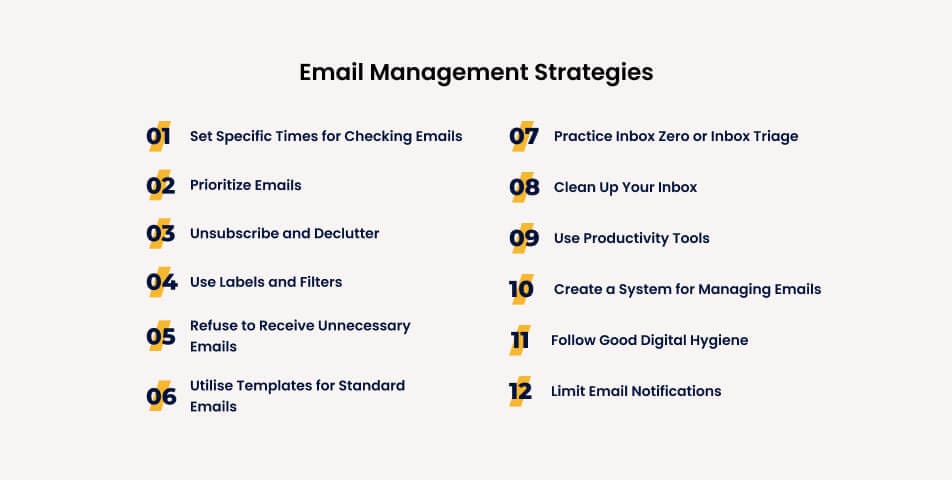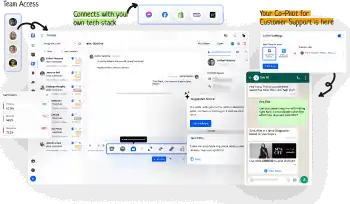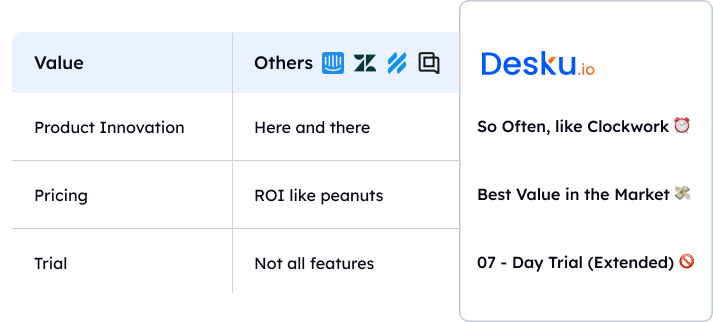Mastering the art of effective Email Management Strategies is the key to defeating the overwhelming inbox chaos. Whether you’re flooding in a sea of unread messages or struggling to stay organized, implementing the right practices and tips can transform your email experience.
Get ready to streamline your email today, boost productivity, and bid farewell to email overwhelm once and for all.
It’s time to embrace the power of effective email management and revolutionize the way you conquer your inbox!
Key Takeaway :
Mastering effective email management strategies is crucial for defeating inbox chaos and enhancing productivity. Implementing practices such as setting specific times for checking emails, prioritizing emails, and utilizing labels and filters can help streamline your email experience and reduce overwhelm.
What is Email Management?

Email Management simply means, organizing, storing, sorting, and managing emails in a structured way.
One aspect of email management involves maintaining a clean email inbox. This means keeping your inbox clutter-free by organizing and archiving emails appropriately, deleting unnecessary messages, and categorizing emails based on priority or topic.
By implementing email management software options, such as using filters and labels, you can quickly locate important messages and reduce the time spent searching for specific information.
Read More: 11 Best Shared Inbox Tools for Exceptional Support Teams
What is Email Management Software?
Email management software is a tool that helps individuals and organizations effectively organize, prioritize, and automate their personal email workflows.
It provides features and functionalities to streamline email communication, improve productivity, and reduce inbox overload.
The email management software should provide a user-friendly interface, powerful organization, and automation capabilities, seamless integration with other tools, and effective email management tracking features.
It should be able to adapt to individual or organizational needs, making email management efficient and less time-consuming.
12 Best Email Management Strategies and Tips

Managing emails efficiently is crucial for maintaining productivity and organization. Here are some effective email management strategies:
1. Set Specific Times for Checking Emails
Setting specific times for checking emails helps in managing your inbox more efficiently. Instead of constantly checking emails throughout the day, allocate specific periods to focus solely on email management.
This practice allows you to dedicate uninterrupted time to respond, sorting, and organizing your emails.
2. Prioritize Emails
To effectively manage your emails, it’s essential to prioritize them based on their importance and urgency. Prioritization ensures that you address critical emails promptly while keeping less urgent ones for later.
You can categorize emails into high-priority, medium-priority, and low-priority, or use other systems that work best for you.
3. Unsubscribe and Declutter
A cluttered inbox can be overwhelming and time-consuming. Take the time to unsubscribe from unnecessary mailing lists and newsletters that you no longer find valuable.
Regularly decluttering your inbox reduces the number of incoming emails and allows you to focus on relevant messages.
4. Use Labels and Filters
Labels and filters are powerful tools in email management. They help in organizing and categorizing incoming emails automatically.
You can create labels based on projects, clients, or any other relevant categories, and set up filters to automatically assign labels, mark emails as important, or move them to specific folders. This way, you can quickly locate and prioritize emails based on their labels.
5. Refuse to Receive Unnecessary Emails
When possible, take proactive steps to prevent unnecessary emails from cluttering your inbox. This may involve unsubscribing from mailing lists, requesting colleagues or clients to use other communication channels for non-essential matters, or setting clear boundaries regarding email usage and expectations.
6. Utilise Templates for Standard Emails
If you find yourself frequently sending similar emails, utilizing templates can save time and improve efficiency. Create pre-written templates for standard responses, such as acknowledgements, meeting confirmations, or frequently asked questions. Using templates allows you to quickly compose emails without starting from scratch each time.
7. Practice Inbox Zero or Inbox Triage
The concept of “inbox zero” involves keeping your inbox empty or near-empty at all times by processing emails promptly. This approach requires you to take action on each email as it arrives, such as replying, deleting, archiving, or delegating, so that your inbox doesn’t accumulate a backlog.
Alternatively, you can practice “inbox triage,” where you quickly skim through emails and categorize them for later action, ensuring important emails are addressed first.
8. Clean Up Your Inbox
Regularly clean up your inbox by archiving or deleting emails that are no longer needed. Archive emails that you may need for reference in the future, and delete emails that are no longer relevant or have been properly addressed. A clean and organized inbox makes it easier to find important emails and reduces clutter.
9. Use Productivity Tools
Various email management software and tools are available to enhance your productivity and streamline email management. These tools often include features like email tracking, email scheduling, reminders, integration with calendars, and advanced search capabilities.
10. Create a System for Managing Emails
Develop a personal system for managing your emails that aligns with your preferences and work style. This system may include the use of labels, filters, folders, specific email management software, or any other strategies that help you stay organized and productive.
11. Follow Good Digital Hygiene
Maintaining good digital hygiene involves adopting practices to keep your email account secure and organized. This includes regularly updating your email management software and other relevant applications, using strong and unique passwords, being cautious with email attachments and links, and regularly backing up important emails or data.
12. Limit Email Notifications
Excessive email notifications can be distracting and disrupt your workflow. Adjust your email notification settings to limit interruptions, allowing you to focus on tasks without constant email interruptions. Consider turning off notifications altogether or configuring them to only notify you for critical emails or from specific contacts.
Some More Advice for Email Management
Specify a time limit for handling your email inbox
Set a designated time limit, such as 30 minutes or an hour, to efficiently manage your email inbox. This helps you stay focused and avoid spending excessive time on email-related tasks, promoting effective email management and productivity.
Create several inboxes or little emails
Consider creating multiple inboxes or using separate email accounts for different purposes, such as personal and work-related emails. This helps in organizing and managing emails more effectively, ensuring that messages are appropriately sorted and reducing clutter in your primary inbox.
Use email add-ons and tools
Utilizing such as plugins or extensions can provide features like email tracking, scheduling, reminders, advanced search, and integration with other productivity apps, contributing to efficient email management and streamlining your workflow.
Read More: The Top 5 Advantages of Best Shared Inbox Software
7 Email Management Practices to Organise Your Email Inbox
1. Regularly Declutter Your Inbox by Archiving or Deleting Unnecessary Email Accounts
Regularly cleaning up your inbox by archiving or deleting unnecessary emails from a specific account helps maintain a clutter-free workspace and ensures that important email data are easily accessible. It improves efficiency and reduces the risk of overlooking important follow-up emails or losing track of critical information.
2. Unsubscribe from Irrelevant Newsletters or Promotional Emails
By unsubscribing from irrelevant newsletters or promotional emails, you can reduce inbox clutter and focus on essential messages. It eliminates distractions, improves productivity, and ensures that your day to deal with email inbox is filled with relevant content that aligns with your interests and needs.
3. Prioritize Email Account Based on Urgency and Importance
Prioritizing the best email management tools is an important part of any email based on urgency and importance allows you to tackle critical tasks first and avoid getting overwhelmed by a high volume of messages. By focusing on important emails, you can ensure timely responses and maintain effective communication, especially when it comes to time-sensitive matters or important follow-ups.
4. Create Filters and Labels for Similar Messages
Creating filters and labels for similar messages helps you organize your highly customized email management system more efficiently. You can categorize emails based on specific criteria, such as senders, subjects, or keywords. This enables you to quickly locate individual emails and streamline your email management needs.
5. Don’t Subscribe to Group Messages that Don’t Pertain to You and Request Removal
Avoid subscribing to email every day that is not relevant to your interests or responsibilities to email open all day long. Request removal from such mailing lists to prevent unnecessary clutter in your inbox and maintain a focused flow of important and relevant information.
6. Mark Messages that You Cannot Respond to Immediately as Important
If you come across email attachments that require attention but cannot be addressed immediately, mark them as important or flag them for follow-up. This ensures that you don’t overlook important tasks or inquiries and helps you prioritize and read the email responses effectively.
Sometimes we also miss out on valuable customer feedback that can ultimately help in making our business better and more and of course we do not want to miss that, mark those messages easily!
7. Write an Email Subject Line to Retain Inactive Subscribers
The email subject line plays a crucial role in capturing the attention of your audience and increasing email open rates. When it comes to retaining inactive subscribers, it’s essential to craft subject lines that pique their interest and entice them to open the must-have email.
Conclusion: Choose the Right Email Management Software for your Business
In conclusion, choosing the right email management software can help businesses to effectively handle their email communication.
Using email management like Desku can provide valuable features like automated email handling, efficient email tracking, and the ability to manage emails across multiple platforms.
Not only it helps in management business but you can also increase Customer Satisfaction as you will have a clearer picture of the emails that you have received.













